
They are wonderful animals and make low maintenance pets. Assuming you don’t get a venomous snake or a large constrictor, of course.
They don’t need much care, much attention, much food, or much space.
But if you want a pet that will be your best friend, will spend lots of quality time with you and will love you unconditionally, you should not get a snake.
You need a dog. Or maybe a cat. Or at least a mammal.
Snakes exist with you. At best, they kind of like you because you give them food. But that’s about it.
And that’s just one of the things you need to consider if you’re thinking about getting a snake as a pet.
We’ll cover the other big factors you absolutely need to think about and also answer the most common questions concerning pet snakes. Finally, we’ll give you some info on the easiest pet snakes to care for, so that you know which breeds are especially good for beginners.
Table of Contents
Pet Snakes: 7 Things You Need To Consider
There are a number of things to consider when trying to decide whether to get a snake and which type to get. The following 7 factors are perhaps the most important. Do not buy before carefully thinking about each one.
1. Long-Term Commitment
You need to be aware that just about any snake is a long-term commitment, but some live far longer than others. How long do snakes live?
In captivity, some species can live over 30 years. Most easily live for 15 years. Do not even think about getting a snake, unless you are ready to commit a large part of your life to caring for it.
2. Food
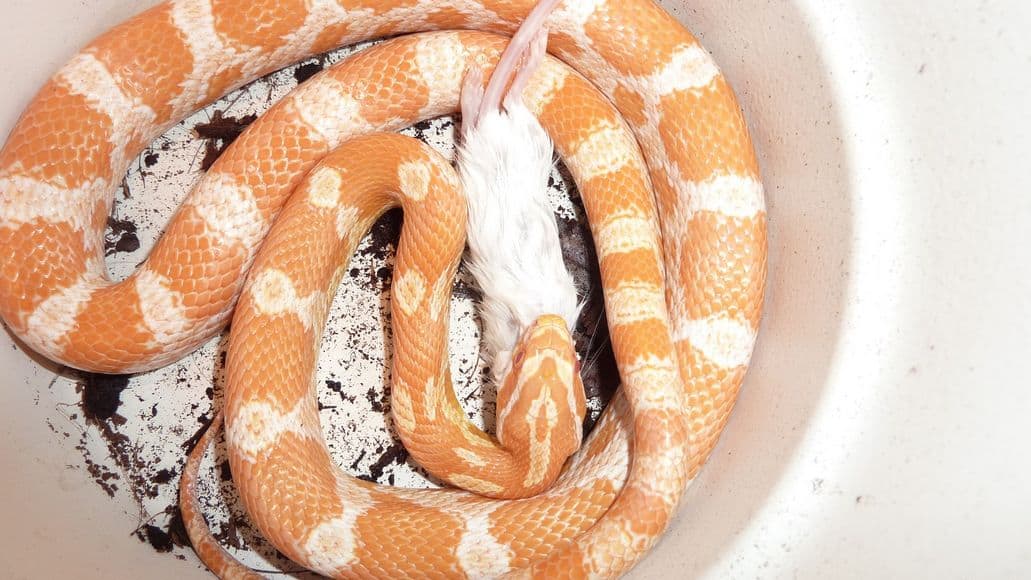
Snakes in captivity generally eat thawed mice or rats. If you have any qualms about feeding either of those to your snake, this is probably not the pet for you. You’ll also need to store them in a freezer. There are species that eat insects and some snakes that only eat eggs, so you could also consider one of those, if you have problems feeding it rodents.
3. Don’t Get More Than You Can Handle
Venomous snakes and large constricting snakes are some of the most beautiful, but we do not recommend them as pets for most people, due to the concerns involved in their safety.
Unless you have lots of experience with snakes, it is likely yours will escape at some point (see the next point). If your snake is dangerous, this could put you, or those around you, at risk. Plus, if you snake harms someone else, you will be held liable.
4. Escape Artists
Snakes are always looking for places and small gaps to squeeze themselves into. They are amazing escape artists, so you need to make sure your enclosure is always sealed tight.
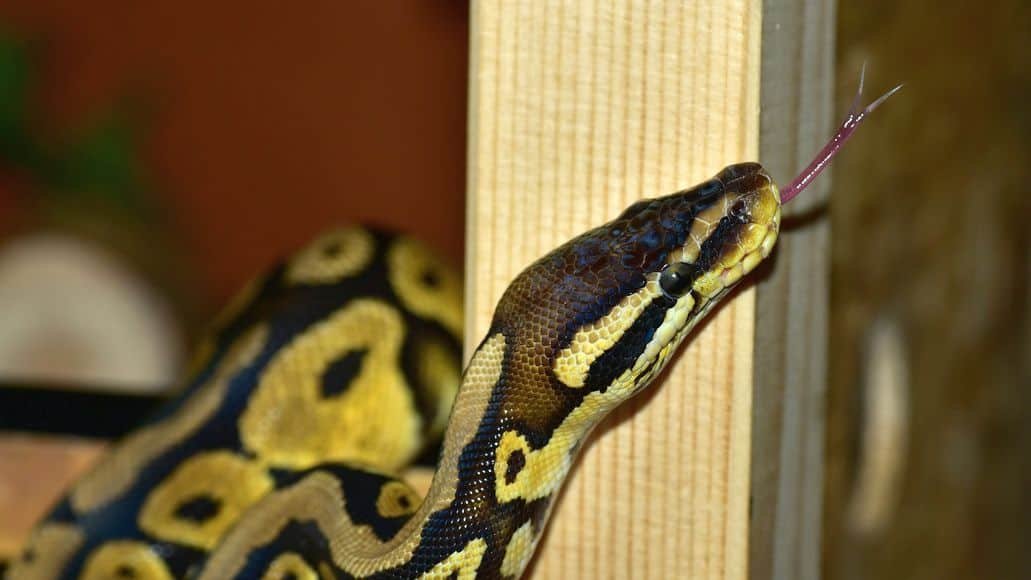
5. Where Is It Coming From?
You should only buy snakes from a trusted and reputable snake breeder. Snakes that are caught in the wild are usually very difficult to tame and are often riddled with parasites and diseases.
6. Health Check
Even if you buy from a breeder, you should carefully check the snake for any signs of illness before purchase and take it to a vet for a full examination afterward.
7. Research
Thoroughly research any breed of snake you are considering. You need to know the type of environment it needs and the type of food to feed it.
Even learning everything you can, there are still things you’ll have to pick up on the fly. For example, different snakes have different preferences as to how they like their food presented and at what time of day they like to eat. Learn what your snake likes and provide that.
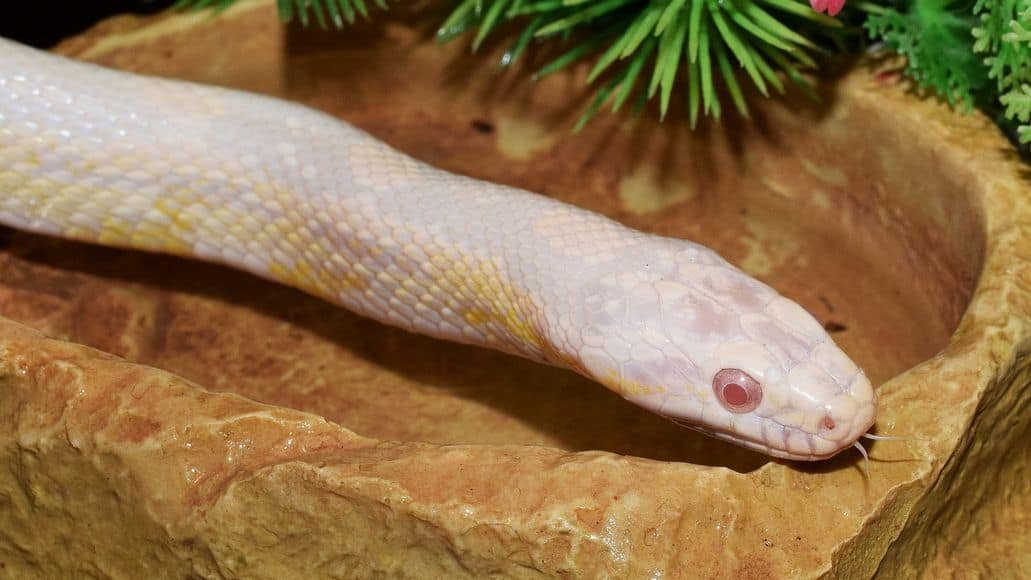
Those 7 points are ones every prospective snake owner needs to consider, but there are many other things to think about as well. We actually get a ton of questions from people considering getting a snake, so we decided to answer the most frequent questions here.
Pet Snakes: Frequently Asked Questions
These are the most common questions we get from people who are thinking about getting a snake.
How Do I Handle My Pet Snake?
Your new snake has arrived home — congratulations! But you’re probably a bit nervous about handling it and even wondering how to pick it up without hurting it. Here’s a quick guide.
The first step is actually to not handle your snake for a while. Give it some time to get used to its surroundings. It is best to wait until it has had a couple of meals, before you start to handle it. It will be more at ease then, since it already knows that you are the one who feeds it.
If you are having trouble getting your snake used to you touching it, this article on taming a snake walks you through the process.
It’s important to wash your hands before and after you pick up or handle your pet snake. Never pick it up by its head or its tail. Hold it by the mid-body area. Use both hands for stability and support the snake loosely but securely with your hands and arms.
The snake may also wrap itself around your wrist for extra support. Don’t bring the snake close to your face or neck as they may also see that as a threatening gesture.
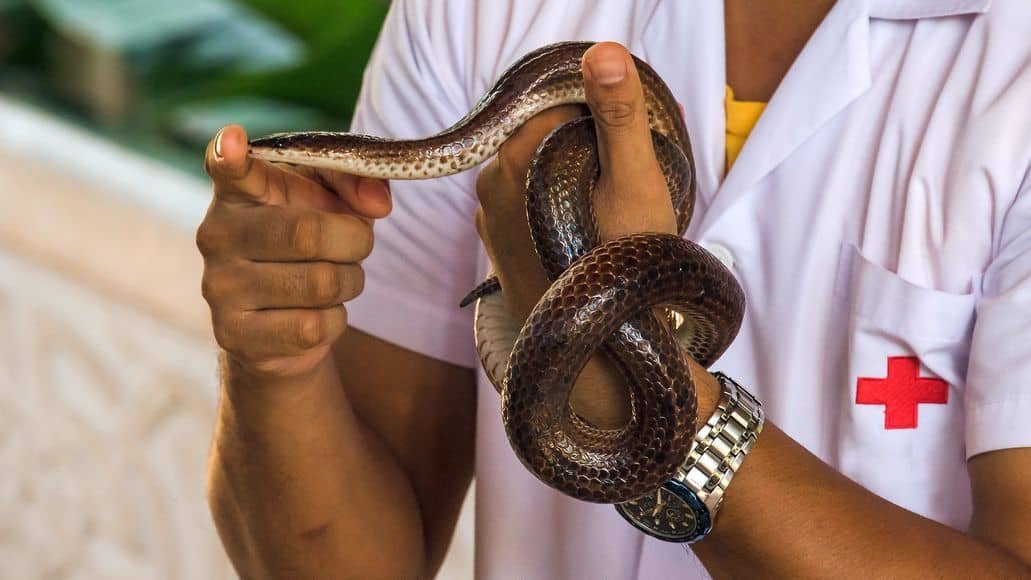
If you want to, you can use a snake hook to lift a small to medium snake out of its enclosure instead of reaching in with your hands. But only use the hook when they are out and about and not when they are hiding, because you may accidentally injure it.
If the snake is in its hide when you want to pick it up, simply lift the hideaway slowly and then reach in to pick it up. Don’t lift the hideaway quickly, because you will startle the snake and it may feel threatened when you then want to pick it up.
Younger snakes are usually more active than older snakes and can be more difficult. If they are not used to you, they may also emit a musky scent if you try to handle them.
The scent is harmless, but unpleasant. Your snake will stop emitting it once it has become accustomed to being handled and no longer sees you as a threat.
Baby snakes sometimes put on quite a display if you try to pick them up, because they think they are being threatened.
This display can include hissing, puffing themselves up, emitting a musky odor or even defecating. Some breeds may even “rattle” their tails in order to try and appear more dangerous.
Despite the display, they are harmless. Take the time to be consistent in handling them and getting them used to you. Soon enough this behavior will cease.
No matter the age of your snake, you should never pick it up when it is feeding, has just fed, or is busy shedding. It is also not always good idea to handle a snake every day, but maybe limit it to every couple of days or even once a week. This does depend on your specific snake, though.
Most people are nervous when they first handle their pet snakes, but there is no reason to be. The more you interact with the snake, the more you will learn about its temperament and how it likes to be handled.
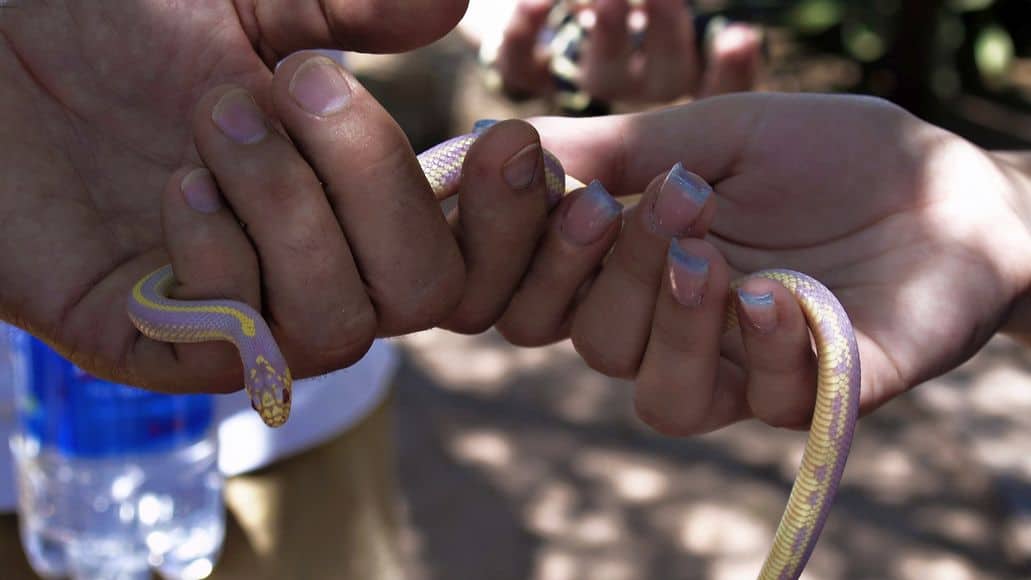
If you have guests or other family members that want to handle your pet, make sure that you first show them how to handle the snake and use the time to also dispel some myths like “snakes are slimy and cold.”
If the person is afraid and doesn’t want to handle the snake, don’t force them, because they could accidentally injure your beloved pet by, for instance, dropping it. You can’t win over everyone!
Are Pet Snakes Dangerous?
If you are young and trying to convince your parents to get a snake, this is an argument you will probably have to counter. The short answer is: “no.” The long answer is: “it depends on the breed of snake you have.”
Snakes in general are not dangerous. Even the most aggressive venomous snakes are not technically dangerous, because they do their best to avoid us. It’s only when they feel threatened that they attack. Leave them alone and they leave you alone.
That said we do not recommend getting a venomous snake. Or a large snake. Not only are they much harder to take care of, but can you guarantee that your snake will never get free and that it will then not run into a situation where it feels threatened and strikes out?
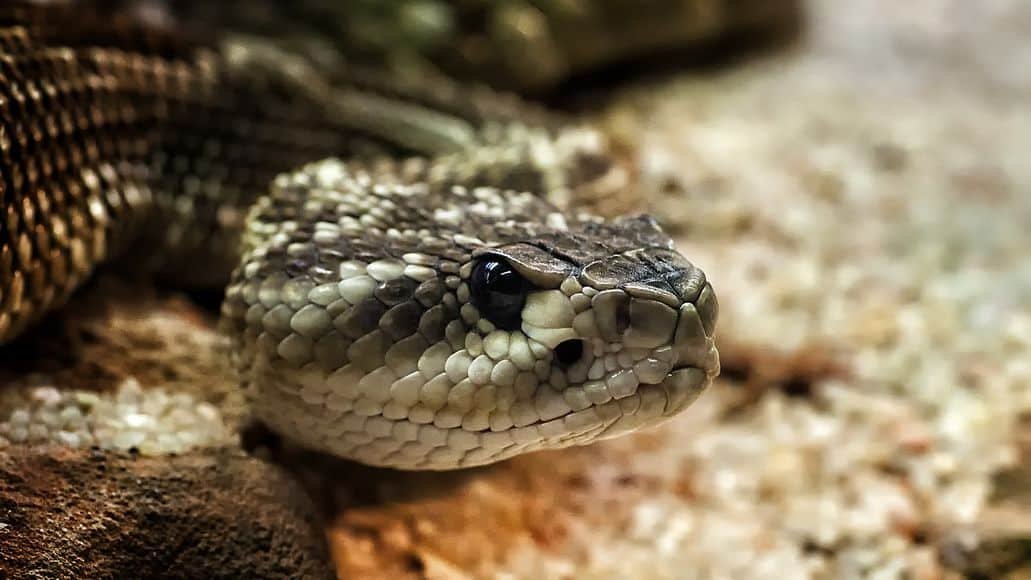
The risk of owning one of these snakes is just far too high for all but the most experienced snake keepers. For that reason, you should stick to smaller and more docile snakes, like the corn snake, the ball python, or one of the other snakes listed further down in this article.
We also have an entire article covering the best pet snakes for beginners. You might also want to check out our list of 10 reasons snakes make the best pets.
Can Your Pet Snake Make You Sick?
As with any other pet, you need to practice good hygiene with your pet snake. Snakes, like many other reptiles, carry the salmonella bacteria. This means they don’t necessarily get sick from a salmonella infection themselves, but they can pass on the bacteria to us.
You can get a salmonella infection after handling a snake and not washing up, before touching your nose and mouth. These germs can also spread if there is contact between the feces or urine of a snake and sources of human food.
Simple common sense and good hygiene habits can take care of most instances where such an infection could occur. This includes washing up after touching or handling your snake or after cleaning its enclosure
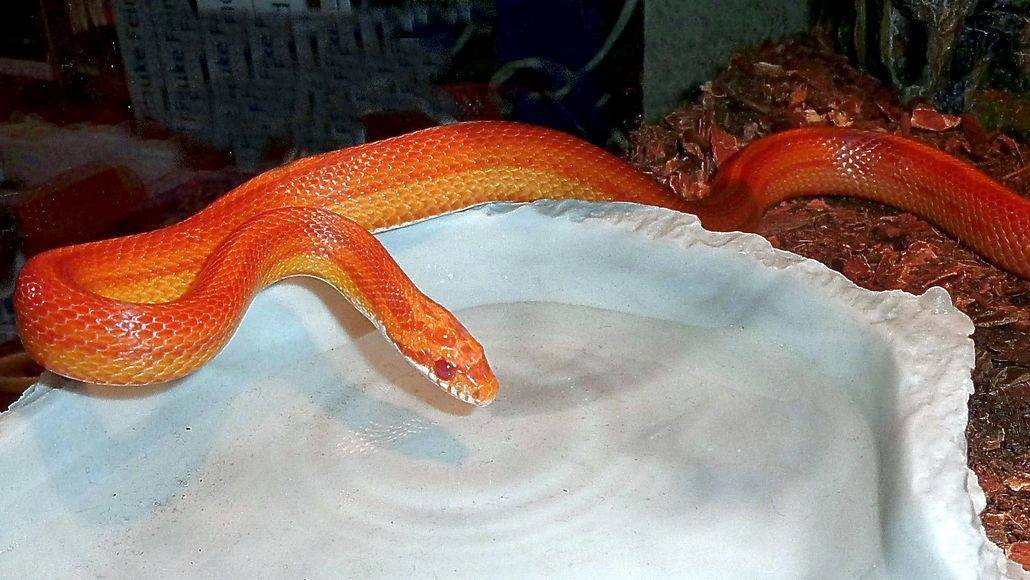
You should also keep any rags or sponges you use to clean the snake’s enclosure separate and not use them for any other purpose. After your snake has a bowel movement, wear gloves when removing it from the enclosure and dispose of the feces in a hygienic manner.
Children under five and people with compromised immune systems are more susceptible to salmonella infection, so special care must be taken when they are handling snakes, etc. The symptoms of salmonella infection are the same as food poisoning, which should be enough of an incentive to keep good hygiene around your pet snake!
Snakes rarely bite if they are handled correctly, but if a bite should occur, clean the wound thoroughly with clean, running water and antibacterial soap, to kill any salmonella or other bacteria which may be around the wound. You should also put some antibacterial cream on the bite wound before covering it with a bandage.
Can Pet Snakes Show Affection?
When we think of pets showing affection, we usually think of the kind of affection cats or dogs show their owners. You have to put this image aside when it comes to snakes.
They can become familiar with you — particularly with your smells, since they have poor eyesight — and may rest on you for warmth or climb on you while being handled.
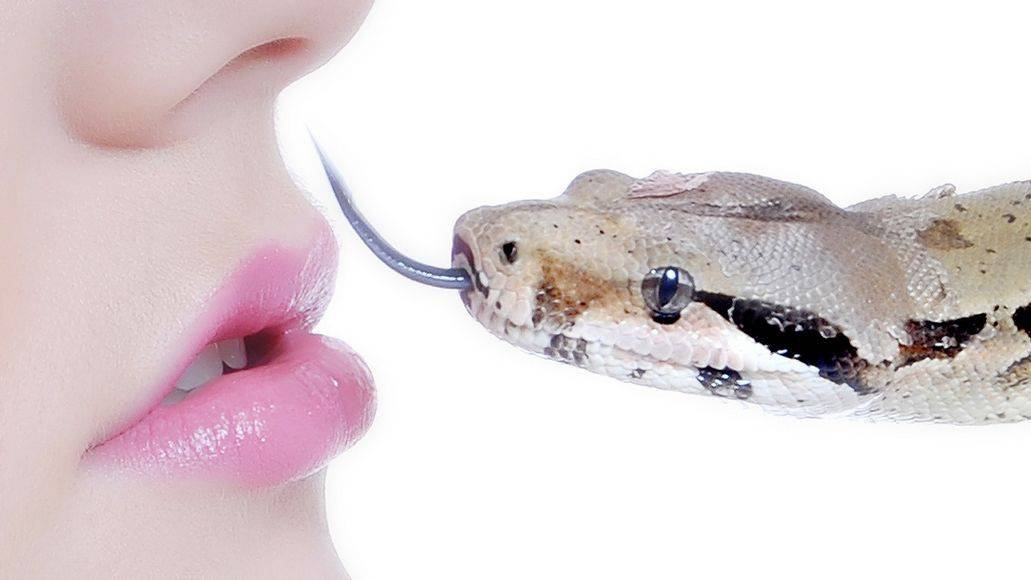
But snakes have retained their primitive characteristics and only show emotion in a limited form, mostly focusing their attention on basic necessities like eating, drinking, and mating.
They also remain wild and can’t really be tamed in the same sense as mammals can. (Read “How To Tame A Snake” for more insight). But that doesn’t mean that snakes don’t show emotion.
Apart from fear and aggression they can also show excitement and curiosity when they get new bedding, housing, or smell a new scent.
Pet snakes do not crave contact the way that cats and dogs do, and are quite happy to be handled only once or twice a week. However, they do each have their own personality and temperament and some may like being handled more than others.
That said, if their actions are anything to go by, pet snakes do grow to trust their owners, as they become accustomed to being fed and handled by the same person (or persons).
After all, they stop emitting the musky odor they emit when they feel threatened, and they won’t bite their owners unless they have a good reason to. And even the friendliest dog or cat sometimes nip at their owners, right?
You showing affection to your pet snake is even more important than it showing the same level of affection to you — they do depend on you and we can imagine that a regular diet of tasty rodents, a home free of predators, and the love of its human is not exactly a life to be hissed at!
Should I Get A Dog Or A Snake?
The experience of owning either of these two pets is very different. We’ll list the four biggest differences here. From that you should easily be able to see which of these two is the pet for you.
Companionship

Dogs win this one hands down. A dog will truly love you and will be your best friend. The two of you will spend a lot of time together and will grow incredibly close.
Snakes will never have this kind of relationship with us. They don’t even have that kind of relationship with their children. Most have no relationship with their children.
Allergies, Dirt, And Noise
Let’s begin with allergies. A snake is the perfect pet if you are allergic to animal hair. You also don’t have to worry about fur getting everywhere or your canine leaving you little “gifts” on the floor when you couldn’t let them out fast enough.
You won’t have a noise problem or have someone begging for scraps from the table and drooling over your face with a snake! If you live in a small apartment or your neighborhood has strict noise rules, keeping a snake as a pet ensures you don’t break those rules or disturb your neighbors.
Habitat
With snakes, you only need to worry about their enclosure and making sure it’s secure so your new snake-friend won’t escape. If you have one of the common pet snake breeds, setting up a perfect livable habitat for your pet snake shouldn’t be a problem.
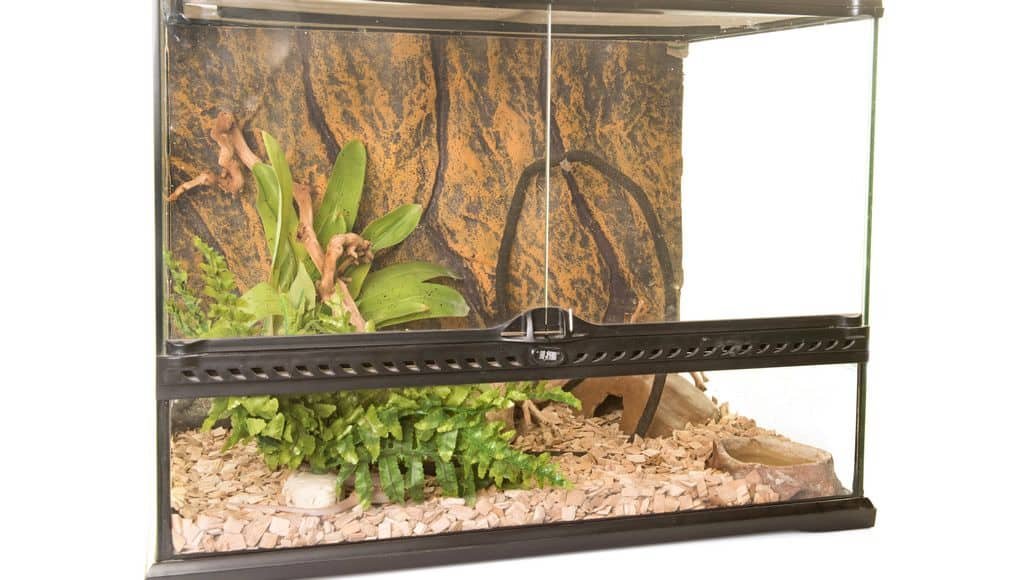
You’ll need to do a bit of research to ensure you get the temperature and humidity just right. Other than that, your pet snake will be happy with water and a fresh rodent every week.
Cleaning the snake enclosure may take some getting used to, but is also hardly rocket-science. Plus, it only needs to be cleaned once a month or so.
Longevity
As with all pets, snakes are an investment of your money, time and love. But unlike most common pets, snakes live a long time. They can live well into their twenties and thirties when kept in captivity.
Unlike dogs, you don’t need to have your snake spayed or neutered. They are quite happy to be alone (probably contemplating the intricacies of the universe) and don’t really care if you give them no attention at all for days on end (apart from keeping them supplied with fresh water and rodents, of course).
If you go away on short stints for work, or works long hours, you don’t need to worry about your pet snake being alone in the apartment the whole day. And since you only need to feed it once a week, you also don’t have to rush home every day to feed it or take it to the park for a walk.
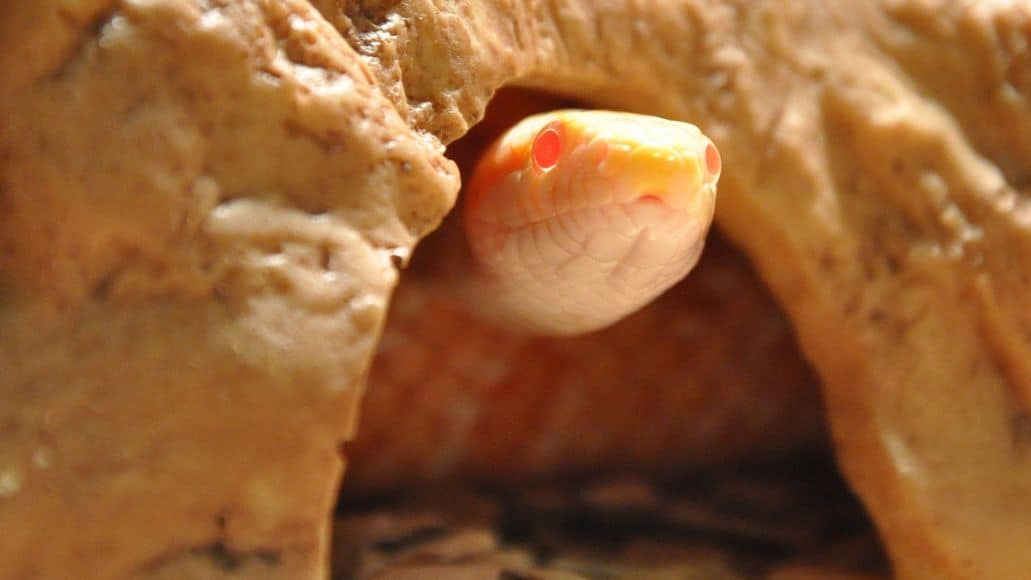
That covers the most common questions we get about pet snakes. If you have additional questions, feel free to ask them in the comments below.
Unless your question concerns the breed of snake to get. For the answer to that, keep reading. We’re going to list the most beginner-friendly snake breeds and provide some basic info on each one.
Pet Snakes That Are Great For Beginners
The following breeds of snake are easy to care for and they do not grow too large. This makes them the best choices for a beginning snake keeper.
The Corn Snake
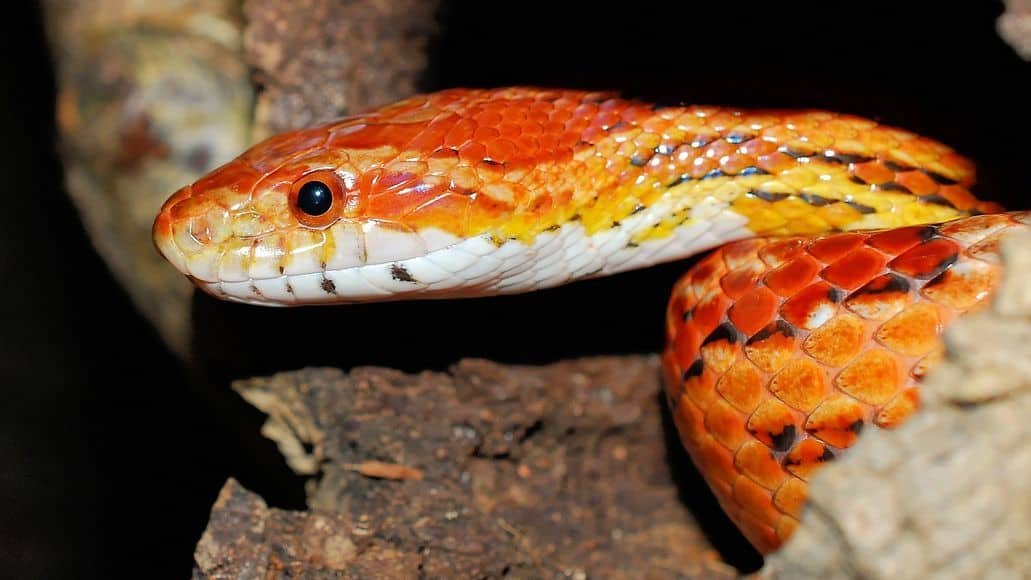
The Corn snake originates in North America and is also known as Pantherophis guttata. They are one of the easiest breeds to care for. They are not poisonous, well-mannered and never grow too long.
When hatched, they are usually 8 to 12 inches long and they reach a maximum length of 4 to 5.5 feet. They don’t need an overly large enclosure. We recommend at least 40 gallons,though some keep them in a smaller cage.
In the wild, corn snakes mainly eat rodents, but will also eat lizards, frogs, birds or eggs. In captivity, they will eat thawed mice. For much more on caring for corn snakes, head here.
The Ball Python
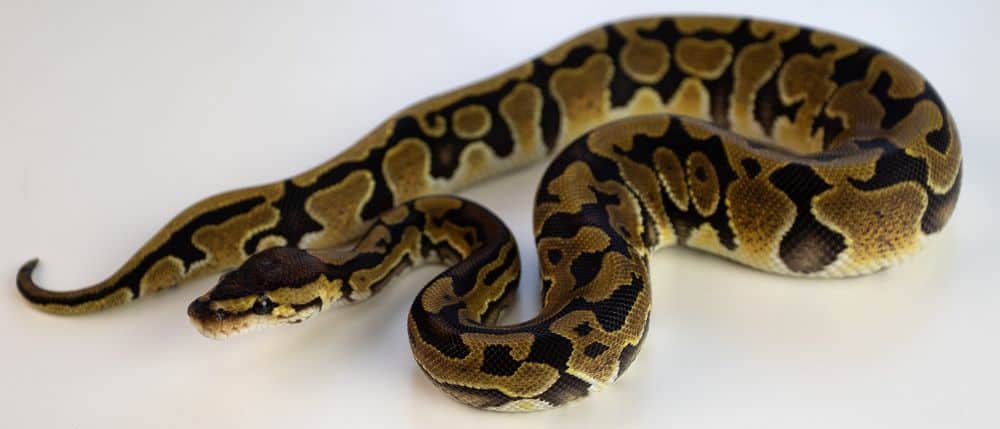
Among all the pythons, ball pythons are the most popular pets. They are also called the Royal python and are native to western and central Africa. They are generally shy and do very well in captivity, because they are small, friendly and easy to care for.
Hatchlings are approximately 10 inches long. Adult females reach 3 to 5 feet in length and adult males reach 2 to 3 feet. You should plan a long life with your ball python, because they can live as long as 40 years.
The ball python comes in many different patterns and color, which is a large reason for their appeal. The yellow banana snake is one of the more popular color varieties.
The ball python likes rodents. Feed a young snake every week and an adult every 1 to 2 weeks. Give them an appropriately sized mouse or rat. Do not feed them live prey. The rodent should be pre-killed or thawed.
Read our care guide for ball pythons to learn more about keeping one of these snakes. We also compare ball pythons with corn snakes directly.
The Gopher Snake
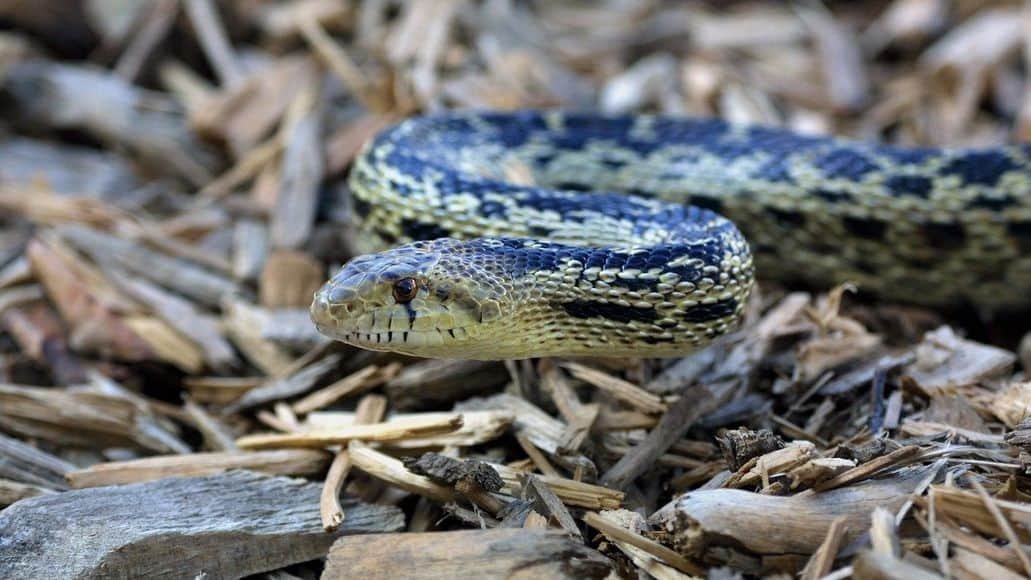
Also known as Pituophis, gopher snakes are the snakes many of us often encounter in the wild where we live, which goes to show that these snakes live an a lot of different environments.
There several types and they are found all over North America. They are ideal for beginners, because they don’t require much in the way of care. But they do grow a bit longer than the two species above and they are a bit wide-bodies as well, so you’ll want a slightly larger enclosure.
A newly hatched gopher snake is about a foot in length while an adult has an average size of 4 to 5 feet and some even reach 6 feet.They have an average lifespan of 15 years and can live as long as 30.
Gopher snakes will eat just about anything. The best choice is once again thawed mice or rats. For more on gopher snakes, read this article.
The Rosy Boa
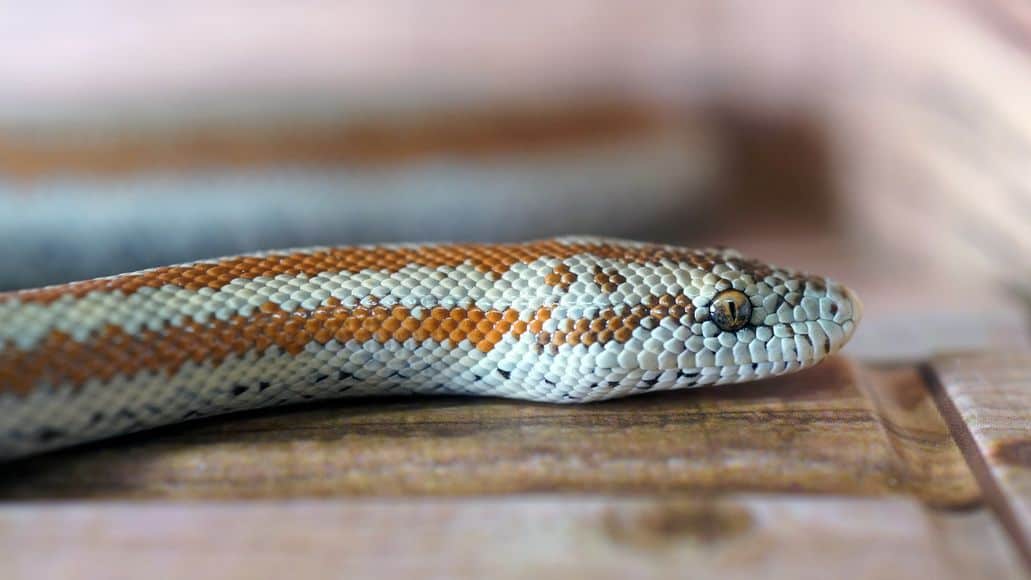
Rosy boas have a manageable size, are easy to take care of, and they tolerate handling well. Plus they are beautiful. Found in the American Southwest, this species has many different patterns and morphs to choose from.
A Rosy Boa hatchling is around 10 inches long, while a mature snake reaches 4 feet in length, so a 20-gallon terrarium would be big enough, though we always recommend giving your snake a bit more space.
The Rosy Boa has an average lifespan of 30 years and can live even longer when in captive. This species likes to eat 2 to 4 times a month during the spring, summer and fall and does not need to eat at all in the winter, during brumation. You can feed it thawed mice. Our srticle on rosy boa care has much more information.
The California Kingsnake
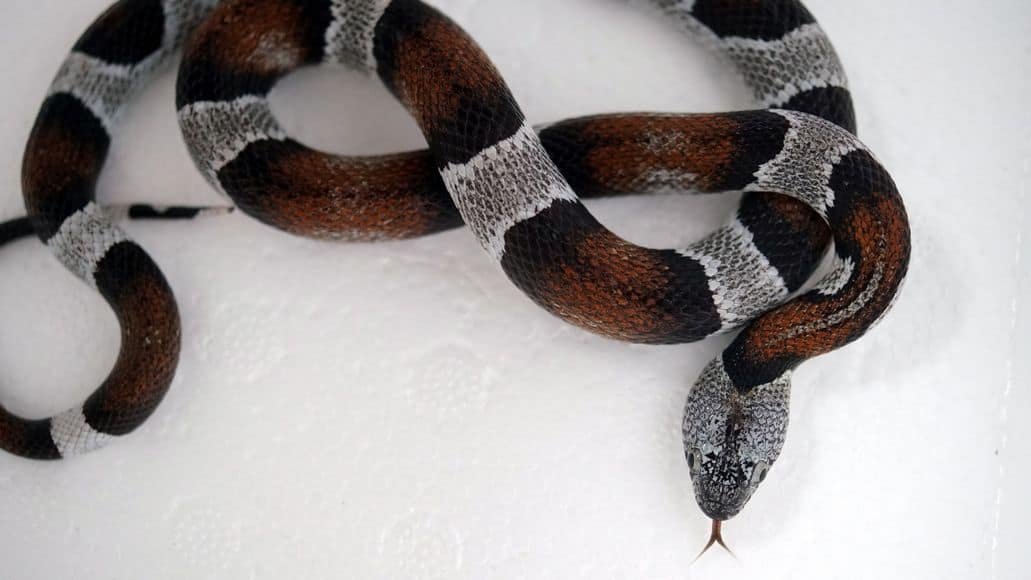
Also known as Lampropeltis getula californiae, the California Kingsnake was among the first snakes to be bred regularly in captivity and is the most commonly kept species of pet snakes. Other kingsnakes, like the Mexican black, also make good pets.
As the name might suggest, the California Kingsnake originates in California and can also be found in the neighboring states of Oregon, Nevada, Arizona, and in Baja, Mexico. It can live in many environments, which make keeping it very easy.
Hatchlings usually range from 8 to 12 inches in length and adults can grow over 6 feet long. They are usually long but not look smaller than they are because they are not heavy.
The California Kingsnake will eat any animal or bird including other snakes, and even rattlesnakes. You can feed your King snake thawed rodents and mice. Feed them once a week. We compare the corn and king snakes directly here.
The Rat Snake
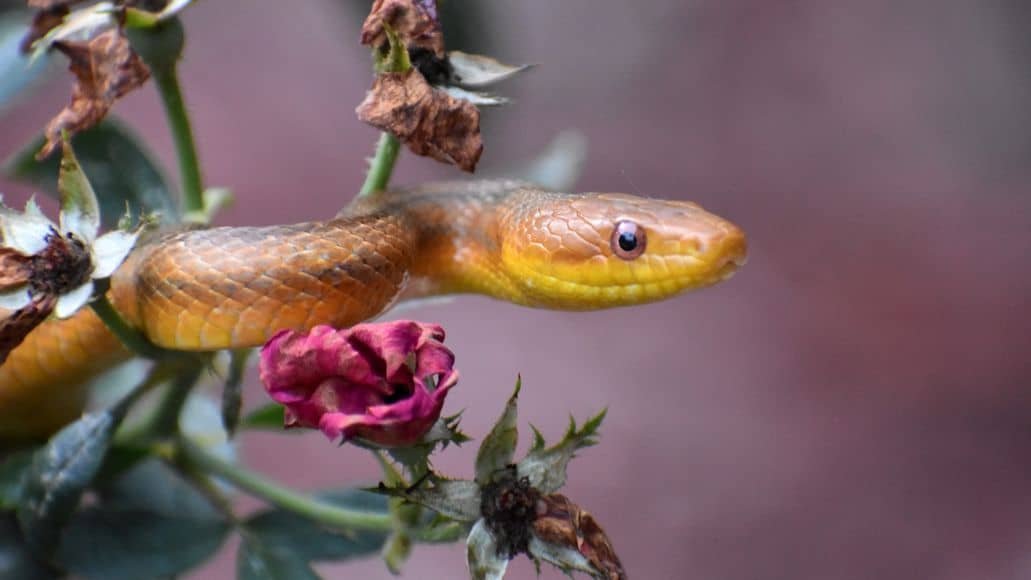
This species of snake is also known as Elaphe obsoleta and is closely related to the corn snake. They share the characteristics that make them both good pets. Rat snakes also have a docile temperament and are safe and easy to handle without extra care.
They are found in the southern and eastern United States and reach an average length of 3 to 5 feet. Feed rat snakes frozen mice or rats (imagine that!) once a week. Read this post for more on rat snakes. You can also read this article comparing bull snakes and fox snakes, which are a type of rat snake.
The Garter Snake
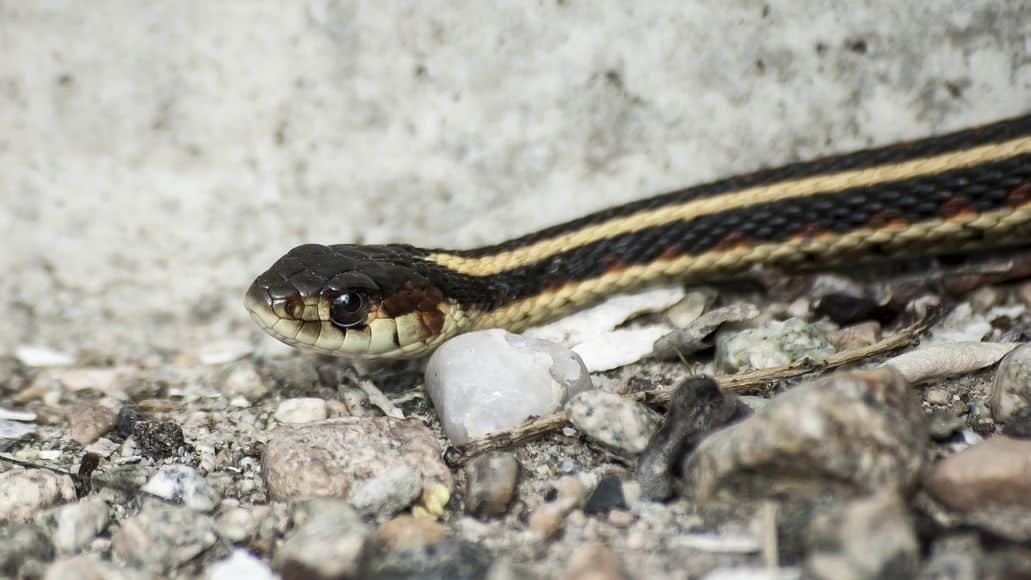
Also known as Thamnophis sirtalis, the garter snake is among the smallest breed of pet snakes. They are ideal snakes for a beginner who is looking to get into snake breeding.
These snakes do not cost much, are usually active, easy to tame, easy to handle and they stay relatively small and thin. They generally grow to 3 to 4 feet in length. You can feed them various small prey, like mice, fish and worms. Learn more about garter snake care.
Pet Snakes: Final Thoughts
Snakes make wonderful pets, and the ones listed above are especially easy to care for. They don’t take up much space, they don’t need much interaction and maintenance and they don’t even eat that much.
The one drawback (which is also a huge plus for many) is that most of them live a very long time. But if you can make that long-term commitment, pet snakes can be a wonderful addition to your household.
Leave a Reply